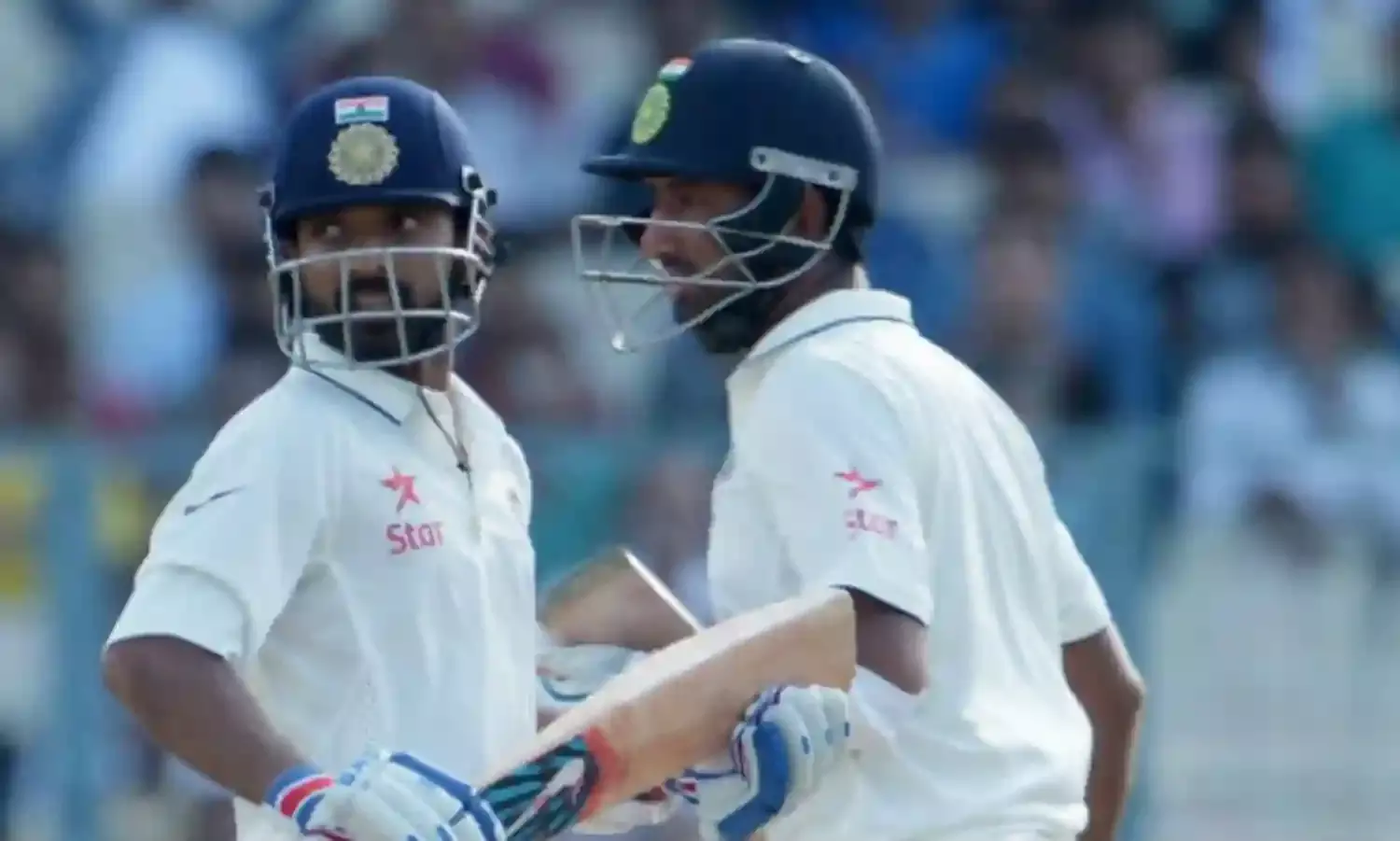Pujara, Rahane Need to Make the Windies Series Count
The Citizen's coverage of the India vs West Indies test series

On paper, they are the two most senior most batsmen in the Indian line-up after skipper Virat Kohli. The duo have been mainstays in India's batting line-up in Tests over the past few years but a few things have changed over the last few months that puts them in a precarious position before the home series against West Indies.
The England series was perhaps a big one for several Indian players and at the end of it, two other senior mainstays, Murali Vijay and Shikhar Dhawan, are no longer in the setup. Rahane was lucky to escape the axe and this puts him in a must-perform situation for the West Indies series.
Rahane has been one of India's best overseas players but contrary to his exploits in difficult alien conditions before, the middle-order batsman had a big slump that led to calls for his omission in place of Karun Nair, who was given a raw deal by the selectors.
There are several factors that peg Rahane back. Foremost among this is lack of runs. In 2018, the once reliable middle-order batsman has 324 runs in 7 Tests at an average of 24.92. This would have been excusable because most of India's batsmen, barring an unstoppable Virat Kohli, average less than 30 in this time frame. Rahane, though, unlike his peers, does not have the weightage of home runs prior to his dry run.
In Tests since 2015 at home, Rahane has amassed 1011 runs in 19 Tests but this has come at an average of 34.86, well below par considering the spectacular numbers of his colleagues who enjoy bludgeoning attacks at home. Rahane's numbers in the Asian sub-continent has never been overly impressive. What he did previously, though, was act as a central figure in the middle-order away from home. That hasn't materialised in 2018 where India have had heart-breaking results in South Africa and England. With an Australian tour on the horizon, Rahane has less leeway and the West Indies series could bring about his downfall unless he can reverse the trend.
The presence of Hanuma Vihari, who had success on his debut in England, further acts as a stumbling block to Rahane. Vihari is fresh and unscarred by weightage of losses in SENA (South Africa, England, New Zealand and Australia) countries and could be a valuable addition for the tour of Australia. If he clicks, Rahane might have to bide his time in domestic cricket irrespective of his returns with the added pressure from public and critics to pick Karun Nair.
Pujara's case is more interesting. The no.3 batsman is the second highest run-scorer for India in Tests in 2018, something which would have held much more value had his average not been below 30. The Saurashtra no.3 churned out a hard-fought hundred at Southampton, but much of his season was marred by poor running between the wickets and a general lack of rapport with the team.
The second factor is vital for Pujara just seems a misfit in this Kohli-Shastri regime where aggression and intent are key words thrown around abundantly. Pujara is anything but a regular no.3. He absorbs pressure, puts a heavy price on his wicket and stays out of anything controversial. Yet, his tendency to get bogged down at the wicket could affect the Pujara's chances.
He wasn't even a part of the XI in the first Test of the tour of England at Edgbaston but returned to the fold to have a better series than some of his colleagues on paper. The numbers do not really disappoint in Pujara's case. Worryingly, his lack of positivity at the crease seems to be pegging back the others around him. That the rest fit to the game plans of the present day Indian Test team is perhaps an indication of why Pujara, despite his decent numbers, is in danger of missing out or warming the bench in Australia.
The West Indies series is vital but at home, run-making hasn't been a problem for Pujara. What he needs to show, though, is an appetite for scoring them quicker than usual. If his lack of intent persists, India might be a touch worried to push him in on the bouncier Australian wickets where run-scoring is getting easier by the day. That Australian wickets suit batsmen who love the ball coming onto the bat is a problem for Pujara for if he gets stuck in and does not make runs, he is just pulling back the team, which was often the case this year in England and South Africa.
The duo are experienced enough to get through this tough phase. But general excellence is no longer the mandate in this Indian team where talent is in abundance. Players need to fit to team plans which does not seem to be happening with Pujara and Rahane. One series, that too a home one against the Windies, might not prove to be enough but it is a start to earn the trust of selectors and management.


